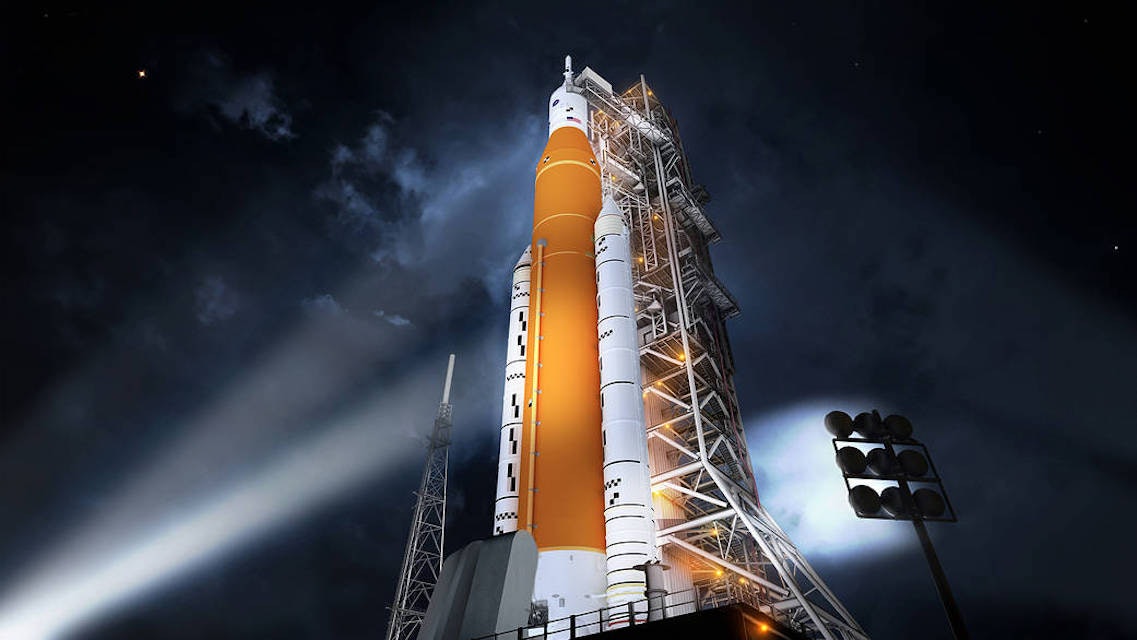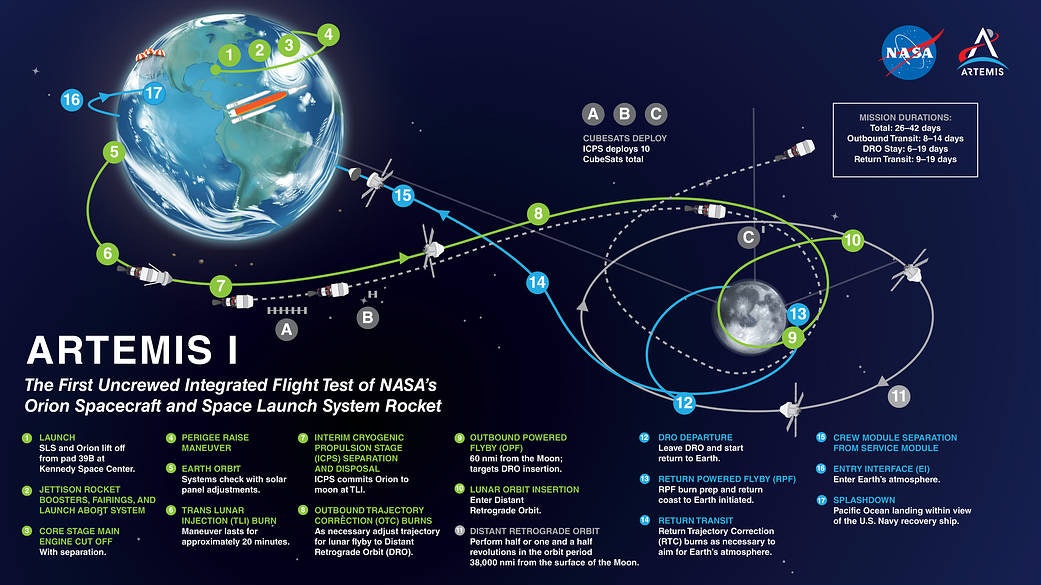
NASA’s Moon-bound mega-rocket suffered another setback Monday, failing its wet dress rehearsal, which could deal a huge setback to NASA’s biggest rocket since the Apollo-era Saturn V.
According to NASA, teams ran out of time on Monday because they had to troubleshoot various problems that started on Sunday. They involved an anti-flammable protective gas, fans that manage dangerous gasses, a not-frigid-enough cryogenic propellant, and an “anti-geyser violation” software alert.
NASA teams across the United States participate in this 2-day, final leg of testing so that the rocket, called the Space Launch System (SLS), can be cleared for takeoff.
To get thousands of miles beyond the moon and back, the future crew-carrying capsule dubbed Orion needs a massive boost in order to successfully complete the agency’s Artemis 1 mission. More than 700,000 gallons of cold liquid propellant will be necessary for the moonshot to work. All that material must be carefully controlled; the pouring of propellant into the SLS rocket and the draining of the craft in case of a sudden last-second launch cancellation must be meticulously evaluated by NASA teams.
If Artemis 1 is successful, the agency will get one step closer to bringing the first humans back to the moon since the Apollo program.
What went wrong with the Artemis 1 wet dress rehearsal?
Monday’s wet dress rehearsal was initially scheduled for Sunday, April 3, after NASA personnel got a “call to stations” on Friday, April 1. But the team had to stand down for 24 hours because of an issue with two pieces of hardware that manage hazardous gasses.
The wet dress rehearsal then moved to Monday, to begin after a pre-tanking briefing. But then an issue emerged with the vendor of gaseous nitrogen, a substance that helps keep the inside of SLS non-flammable during tanking operations.
But once that was resolved, SLS software found an “anti-geyser violation,” according to Charlie Blackwell-Thompson, launch director for NASA's Exploration Ground Systems Program at Kennedy Space Center, who spoke at a Tuesday (April 5) teleconference about the wet dress rehearsal. This built-in protection went off because some liquid oxygen propellant had become too warm, and the substance must remain very cold to function properly. Eventually, the team decided that personnel had to go to the rocket to evaluate the issue, and by then, it was late in the day.
But the wet dress rehearsal had its triumphs. For instance, the team was able to review the Orion launch countdown configuration and checkout the Orion day-of-launch communication, according to Blackwell-Thompson.

What is Artemis 1?
Artemis 1 is the first rocket flight for the Artemis program, which is NASA’s push to return crewed missions to the lunar environment. When the 322-foot-tall SLS finally soars into the Caribbean sky from NASA’s Kennedy Space Center in Cape Canaveral, Florida, the powerful launch vehicle will produce 8.8 million pounds of thrust during liftoff, display a 70-metric-ton (77-ton) lift capacity, take just 90 seconds to “reach the period of greatest atmospheric force,” and send the uncrewed Orion capsule on a 280,000 mile journey towards the moon with impressive momentum.
Artemis 1 will be a four-to-six-week mission, bringing Orion farther than any spacecraft built for people has ever gone before, and ending with Orion logging more time in space than any other craft has done without docking, according to NASA.
NASA had previously targeted Artemis 1’s liftoff for February 2022.
What is a wet dress rehearsal?
During the wet dress rehearsal, teams spend two days practicing the fuel-loading process of the cryogenic propellants. They are also evaluating the de-tanking procedure, which siphons the propellant out of SLS if the launch gets scrubbed.
NASA will get a specific target launch date for Artemis 1 once the wet dress rehearsal data finally shows that all has gone well.
When is the next wet dress rehearsal?
The next wet dress rehearsal won’t happen until after the Axiom-1 launch (currently scheduled for Friday April 8), according to Mike Seraphin, Artemis 1 mission manager at NASA Headquarters. An exact date has yet to be scheduled.







